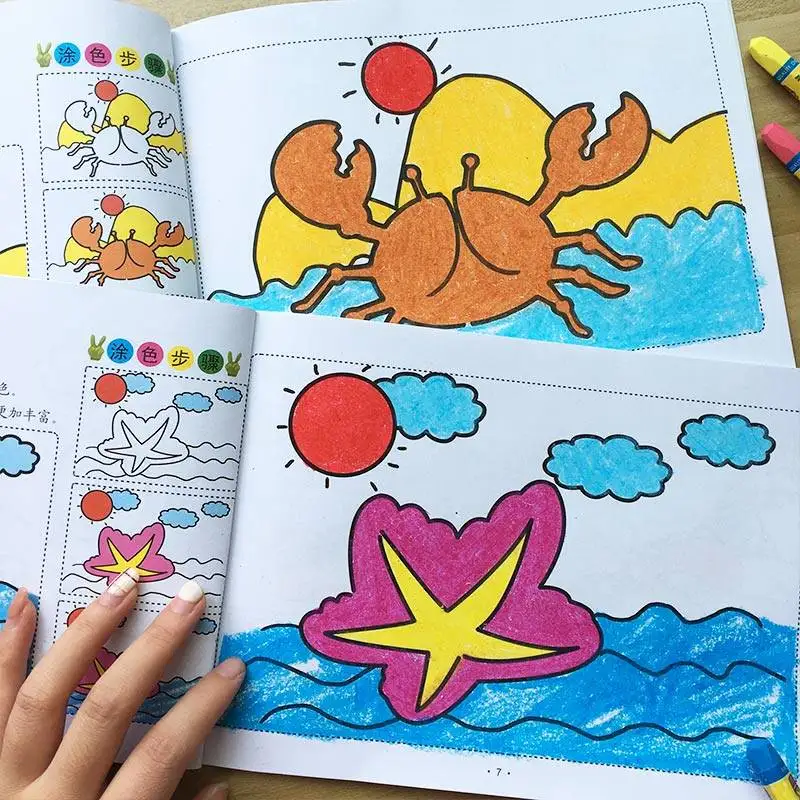Coloring for kids stress relief is more than just a fun activity—it’s a powerful tool for managing anxiety, improving focus, and supporting emotional well-being. Many children struggle to express their emotions verbally, making activities like mindful coloring an excellent way to reduce stress and promote relaxation.
According to Statista, nearly 26% of children aged 3-17 receive mental health services, highlighting the need for simple, effective coping mechanisms. Coloring therapy provides a natural, engaging way for kids to process emotions, enhance creativity, and develop cognitive skills.
The Benefits of Coloring for Kids
Many people think of coloring as a simple pastime, but it offers much more than just entertainment. Even adults turn to stress-relief coloring books to unwind. Coloring provides therapeutic effects, helping children regulate emotions and build essential mental skills.
This article will explore how coloring supports a child’s mental health, reduces stress, and enhances mindfulness.
How Coloring Helps Reduce Stress in Kids
Cognitive Benefits of Coloring
Coloring helps children achieve a state of mindfulness by allowing them to focus on a single activity, reducing overwhelming thoughts and providing an emotional reset. When kids engage in structured, repetitive actions, they can:
- Improve attention span and focus.
- Process emotions and build self-awareness.
- Reduce anxiety and hyperactivity.
Similar to activities like walking or deep breathing, coloring calms the nervous system and supports emotional regulation.
Coloring Enhances Focus & Emotional Control
Mindfulness is the ability to stay present and engaged, free from distractions. Coloring naturally encourages this by requiring kids to:
- Choose colors and fill in patterns.
- Use fine motor skills to stay within the lines.
- Engage in a calming, structured activity.
By making coloring a daily habit, parents and educators can help children improve focus, reduce stress, and develop better emotional resilience.
Coloring as a Creative Outlet for Emotional Expression
How Coloring Helps Kids Express Emotions
Some children struggle with verbal expression, making creative activities like coloring a safe way to communicate feelings. The colors they choose and how they fill the page can give insights into their emotional state:
- Bright colors → Happy, energetic moods.
- Dark or bold colors → Strong emotions, stress, or frustration.
- Soft pastel colors → Calm, sensitive nature.
Encouraging free coloring allows children to express emotions safely, promoting self-awareness and emotional intelligence.
Why Coloring is a Great Creative Outlet
Coloring books stimulate creativity by allowing kids to explore different shades, textures, and styles. This activity helps develop:
- Creative problem-solving
- Self-confidence and self-expression
- An appreciation for art and design
Encouraging open-ended freehand coloring further nurtures creativity and independent thinking.
Coloring as a Relaxation & Anxiety-Relief Tool
Why Coloring Helps Kids Relax
Children, like adults, may engage in doodling or drawing to relieve tension. Coloring provides emotional absorption, replacing negative feelings with calmness and satisfaction.
It helps children:
- Shift focus away from stressors.
- Feel a sense of accomplishment.
- Develop patience and persistence.
When Should Kids Use Coloring for Stress Relief?
Parents can encourage children to color during:
- After a stressful school day
- Before bedtime to promote relaxation
- After an emotional meltdown
- As a distraction during long trips
Creating a calm, distraction-free coloring space at home enhances its benefits as a relaxation tool.
FAQs About Coloring for Stress Relief
1. Why is coloring an effective stress-relief activity for kids?
Coloring engages both the mind and body, promoting a meditative effect that lowers stress and improves focus.
2. Can coloring help children with anxiety?
Yes! Studies show that coloring therapy reduces anxiety by providing emotional regulation and mindfulness.
3. How often should kids color for stress relief?
Children benefit from coloring at least a few times a week as part of a healthy emotional routine.
4. What types of coloring books are best for stress relief?
Books featuring mandalas, nature scenes, and abstract patterns work best for relaxation and mindfulness.
5. How does coloring support a child’s emotional intelligence?
By engaging in coloring, kids recognize and express emotions, leading to greater self-awareness and resilience.
External Resources for Further Reading
- The Benefits of Coloring for Children’s Development – Learn more about how coloring impacts child development.
- Coloring as a Mindfulness Practice – Read about the psychological benefits of coloring.
- How Art Therapy Helps Reduce Anxiety – Explore the role of art in mental health.
Final Thoughts: Coloring as a Lifelong Stress-Relief Tool
Coloring is more than just a fun activity—it’s a powerful stress-relief tool that enhances emotional intelligence, creativity, and mindfulness. Whether used as a calming technique or a way to express emotions, coloring helps children build resilience and emotional well-being.
Encourage your child to explore mindful coloring today—it’s an easy, enjoyable way to promote a happy, stress-free childhood!

